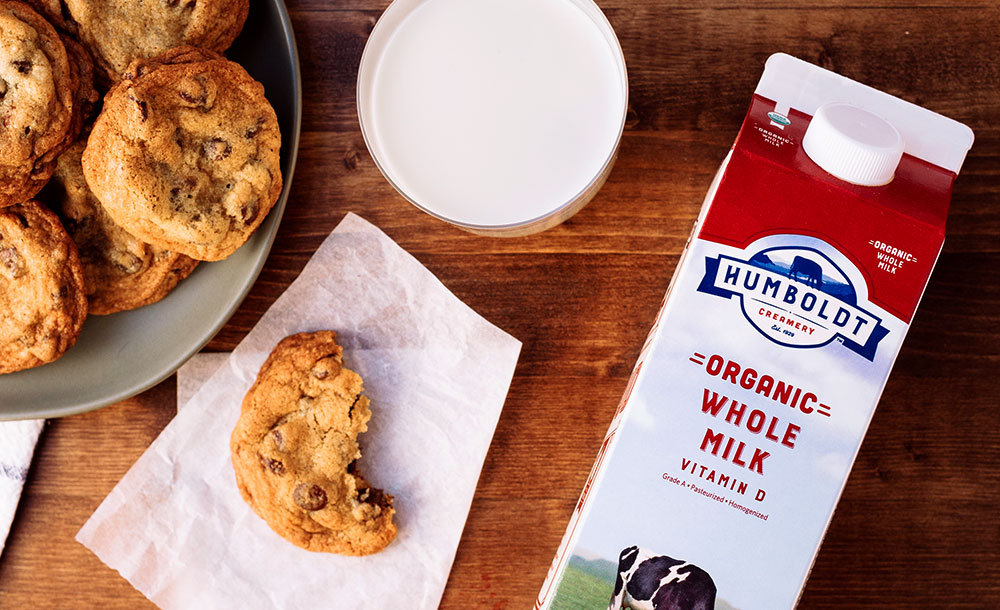What Is Organic Milk?
Do you know what it takes to be truly organic?

Organic milk differs from conventional milk in three specific ways: it must come from cows that aren’t treated with antibiotics, it must come from cows that are not given any hormones for growth or reproduction, and it must come from cows that receive at least 30% of their diet from pasture. That 30% comes out to 120 days out of the year.
Those differences may seem negligible, but they can make all the difference in the world. Practices for raising cows to produce organic milk range wildly. For some dairies, they meet the minimum requirements and call it good. For others, cows are given much more pasture time than required and receive plenty of nutrient-rich grass that improves the quality of their milk. Much like that old joke that asks what you call the medical school graduate who received a C-average (a doctor!), any dairy can use the organic label so long as they meet the basic requirements. This is why it’s a good idea to do deeper research into the origin of your milk so you know what you’re getting, where it comes from, and how the cows are raised.
While the synthetic bovine growth hormone, also known as rBST, is becoming less and less common even on conventional dairy farms, you always know you’re getting rBST-free milk when you choose organic. Furthermore, conventional cattle are commonly subjected to reproductive hormones for breeding purposes, a practice which is not used in organic cattle. This means that raising organic cattle is a more expensive undertaking, but it also means that the cows are bred when they’re healthy and according to their own natural cycle, rather than being injected with hormones that will simulate the natural process at atypical times. It requires a very different approach to the care and breeding of cattle, one in which many organic farmers are already well-versed.
For cows in temperate climates, like the hills of Humboldt County, they can (and in our case, do) receive much more than the standard 30% pasture time. The Northern California coastal temperature only varies about 12 degrees throughout the entire year, which means that Humboldt Creamery cows can receive year-round access to pasture, enjoying the fresh ocean breeze and doing what they do best: foraging and grazing. Cows were meant to graze, and it’s our opinion that allowing them to do so as much as possible results in rich, high-quality milk. We choose to work with nature as much as possible.
For more answers to your questions about organic milk, please reach out to us anytime.